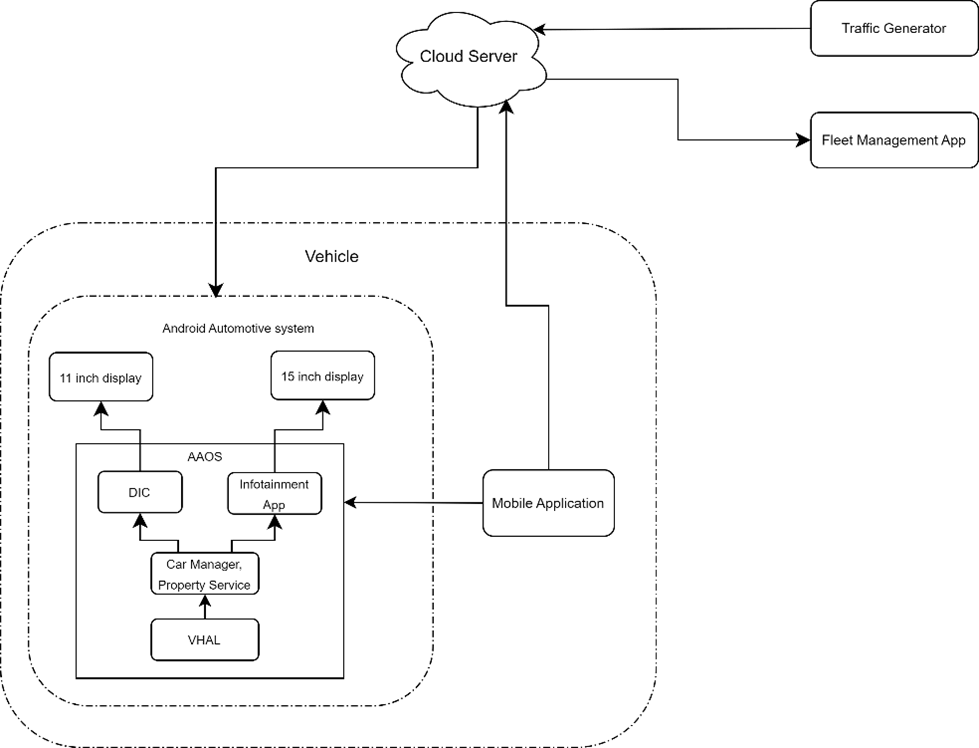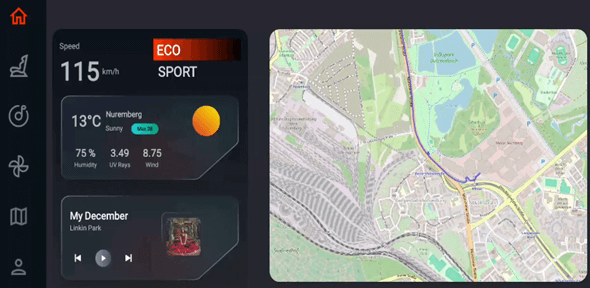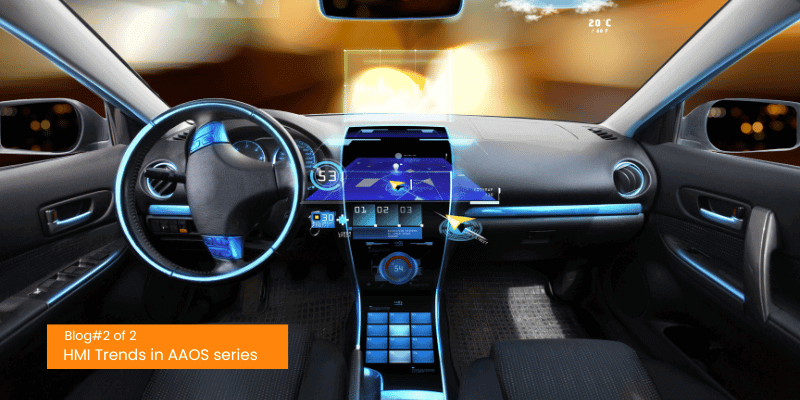- Vivek K
- August 20, 2024
HMI Trends In Android Automotive OS | Part 2
Developing HMI for cars using Game Engines and Gamification tools
As the automotive industry continues to evolve, the importance of enhanced UI cannot be overlooked. A key aspect of this evolution is integration of games engines and gamification tools into the development of HMI in Android Automotive OS. These technologies offer innovative solutions for creating interactive, engaging, and visually appealing user interfaces. For instance, General Motors’ GMC HUMMER EV uses Unreal Engine (Game engine) in its digital cockpit for interactive UI and better user engagement features. This part of blog will explore how game engines and gamification tools can be effectively utilized to advance HMI development in AAOS, showcasing real-world examples and best practices.
For an introduction into the convergence of AAOS & HMI trends and examining their impact on the automotive industry, read Part 1 of this 2-part blog series.
Game Engine for Rich UI
Game Engines like Unity or Unreal are powerful game development platforms used to create 2D/3D games. It offers a list of tools for game development including robust engine, advanced graphics capabilities and support for multiple platforms. Some of its components are as follows:
- Enhanced User Engagement: Incorporation of elements of gamification, such as rewards, achievement and tutorials, HMI can make daily tasks more disciplined and engaging. For example, eco-driving rewards can encourage more fuel-efficient driving habits.
- Learning: It can also help users to learn about features more efficiently through interactive tutorials.
Optimizing Graphics Demands on AAOS
Integrating graphics and interactive animation with HMI provides a better user-driven development. However, these heavy graphics can be a burden to the vehicle’s board with limited memory and OS support. It is required to optimize these graphics for smooth operation. Some of the strategies that can be used to address these challenges are as follows:
Performance Optimization
- Optimizing Texture and Materials
- Using Shader in UI more wisely
- Use Dynamic batching
Resource Optimization: Memory optimization & Asset compression
Testing and Debugging
The above form the building blocks of optimization, and can be added with other means such as Android profiler for better understanding of resource consumption and based on which optimization can be performed. It helps with smooth working and a better user-friendly interface.
Revolutionizing the In-car Experience: Introducing Ignitarium’s success with HMI design in AAOS System
Introducing Ignitarium’s all-inclusive digital cockpit solution running on Android Automotive OS (AAOS), which consists of an intelligent infotainment system for entertainment and connectivity, a connected Mobile application for customised in-car control, and vehicle cluster for real-time vehicle monitoring. Designed to be run on AAOS, the solutions leverage the latest HMI trends to deliver a user-friendly experience. The fleet management cloud application platform enhances these functionalities by offering real-time insights and analytics to streamline operations. When combined, these elements transform driving experience, giving drivers unmatched ease, control, and efficiency on the road.
The HMI system comprises of four interconnected applications: Digital Instrument Cluster, Infotainment, Mobile application, and Cloud infrastructure. These applications work cohesively to provide real-time vehicle information, navigation assistance, simulation capabilities, and fleet management solutions respectively.

At the core of the system lies the Android Automative OS (AAOS), a robust platform designed to support advanced automotive applications.
1. Application Layer
- DIC (Digital Instrument Cluster) and Infotainment app are two distinct application that operates on vehicle display.
- Infotainment applications provide a blend of utility features, and the centrepiece of this system is the dynamic map. It receives data from Car Manager along with the mobile application. Car Manager provides the speed of the car to be projected on the Infotainment screen, while mobile provides variety of data for maps including destination, waypoints, etc. The communication is done via cloud server.
2. Application Framework
- Car Manager and Property Service forms an essential application framework that orchestrates the functionality of DIC application. It facilitates the communication between applications and vehicle hardware while ensuring standardized access to vehicle data and functionality.
- Through Car Manager and Property Service, the Infotainment app and DIC accesses vehicle-related information and controls vehicle function such as navigation. It helps in handling requests from DIC and infotainment to communicate with underlying hardware through VHAL.
3. Hardware Abstraction Layer (HAL)
- VHAL plays a crucial role in interfacing with the vehicle’s hardware components (the ECUs). It abstracts the complexities of hardware communication, enabling DIC to access vehicle data and control various functionalities efficiently.
From real-time vehicle monitoring to navigation and fleet management, our solution is designed to meet the diverse needs of modern drivers and fleet operators.
Cluster Application

Infotainment Application

Orchestration Platform [ Cloud ]

Challenges and Opportunities Ahead
Despite the promise of AAOS and HMI technologies, several challenges should be considered which could cause a major roadblock in future. Concerns like data privacy, and driver distractions must be addressed to ensure safe and reliable use of connected car technologies. Some key concerns include:
- Adherence to various Regulatory Compliances, to ensure that the interface does not compromise driver safety.
- Ensuring compatibility and optimal performance across various hardware configurations can be challenging.
- Vehicles are increasingly connected to external networks and services, raising concerns about data security and privacy. A robust security architecture should be implemented to secure user data.
- The solution must respect localization and internalization standards to ensure that their product is understandable to users worldwide.
However, with the interest and collaboration of different technologies partners, automakers, regulators and shareholders, the above challenges can be overcome, encouraging the full potential of AAOS and HMI in revolutionizing the future of connected mobility.
Conclusion
Incorporating game engines and gamification tools into HMI development for Android Automotive OS offers a transformative approach to enhancing user experience. By adopting advanced graphics and interactive features, as demonstrated by General Motors’ use of Unreal Engine in the GMC HUMMER EV, the potential for creating engaging, intuitive, and visually appealing interfaces is immense. However, optimizing these elements for smooth performance on automotive hardware is crucial. As these technologies continue to evolve, they promise to revolutionize the way drivers and passengers interact with their vehicles, setting new standards for safety, convenience, and enjoyment in the automotive industry.






























